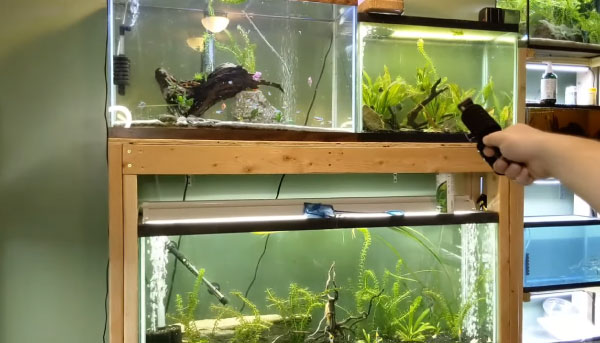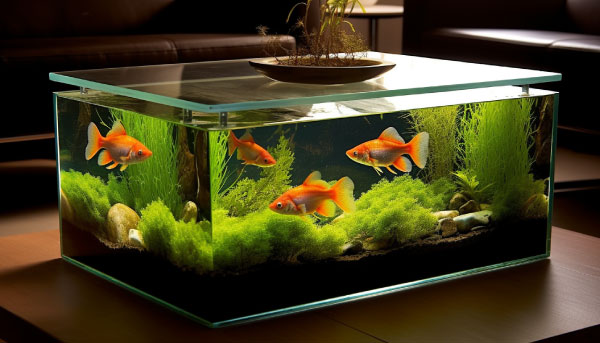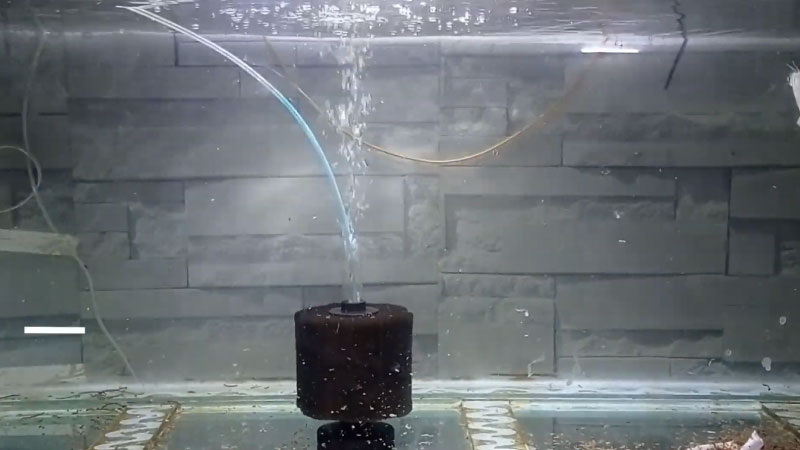You need to make the bubbles in your fish tank smaller for aesthetic purposes.
Most people don’t know how to do this because skipping a step can be fatal for the safe function of your fish tank.
The article will guide you on how to make sponge filter bubble smaller in fish tank.
What Do Bubbles in My Fish Tank Mean?

Your aquarium may be full of dangerous gases such as carbon dioxide or hydrogen sulfide. These gases can make your fish sick, and cause damage to your aquarium. To prevent this, you should test the water every week. Also, make sure that your aquarium has enough oxygen in the water.
- Bacteria can cause problems in aquariums.
- Bubble formation can indicate that there’s too much ammonia in the water.
- Bubbles can also indicate that there are too high of nitrate levels.
- A lack of oxygen can lead to fish death.
- Fish can suffocate due to lack of air space.
- An imbalance of salt and fresh water can cause algae growth.
How to Make Sponge Filter Bubbles Smaller in Fish Tank
Sponge filters are a popular type of filter that is used in aquariums. They are able to filter out large amounts of debris, silt, and other particles from the water. They also allow for easy maintenance and cleaning.
One of the key components in this process is the bubble solution that is added to the water before it goes into the sponge filter. The bubbles increase surface area which allows more water to pass through. The bubbles also help with evaporation by trapping more heat in the water before it goes through the sponge filter.
There are different types of sponge filters that can be used depending on your needs and budget. Some require regular replacement while others last for years.
Aquariums are often the most popular type of fish tank in households. However, the bubbles in a fish tank can be a nuisance for both the fish and the aquarium owner. This is why it is important to know how to reduce these bubbles.
In this step-by-step guide, we will show you how to reduce your aquarium’s bubble size and potentially save your fish from being trapped inside them.
Step 1: Remove all food and decorations from your aquarium before starting this process. You should also remove any plants that are too large for your aquarium or that are attached to decorations, as they can be caught on the bubble wand or suction cups.
Step 2: Finally, fill up your aquarium with water up to the half-full mark.
Why Does Sponge Filter Bubbles Get So Big?

The answer to this question is that the filter sponge bubbles are made up of air. When you put the filter sponge in your fish tank, it creates a barrier between the water and air. As more and more water flows through the filter sponge, the air gets trapped in between the bubbles.
This is a question about how Sponge Filter Bubbles get so big. The answer to this question is that as more and more water flows through the filter sponge, the air gets trapped in between the bubbles.
When Are Fish Tank Bubbles Normal?
Water should be clean and free of any bubbles or foam. Bubbles shouldn’t cover the entire surface, nor should they look foamy. Fish should not be found in bubble nests. Debris should never be present in the bubble nests. Micro bubbles are often found in water, and they’re harmless. You shouldn’t worry about them unless they get too big or block your view.
– “You’re always going to see air bubbles in the water.”
-“If you notice any air bubbles that aren’t moving, or that are very large, or if you see foam covering the entire surface of the aquarium, it could indicate problems. ” Micro bubbles are microscopic air pockets that form in liquids. They are harmless and don’t affect the quality of the water. However, they do make cleaning easier.”
Why Is My Sponge Filter Not Bubbling?

Sponges are used to filter water as well as to clean things. Sponge filters work by trapping particles in the holes of the sponge. When the sponge gets dirty, it needs to be cleaned or replaced.
If your sponge filter is not bubbling, you should take it apart and check the parts. You might want to replace some parts.
How Can I Make A Sponge Filter Quieter?
Sponge filters are quiet because they don’t create a lot of turbulence.
A cheap sponge filter makes a loud noise when you turn it on. You may want to try using a different type of filter or even get a better quality one.
Sponges are soft and absorbent. They can be used to clean up spills or remove stains. They are also great for soaking up oil spills. They can be placed under aquariums to help them purify water.
There isn’t much you can do about this noise other than getting a better filter. You could try putting an aquarium pump inside to help reduce the sound, but it might not work as well as you think.
FAQs
Are too many bubbles bad for fish?
Bubbles are a common sight in the aquarium, but they can be harmful to fish. They can suffocate them and make it difficult for them to breathe. This is because the bubbles can trap gases inside of them and make it difficult for fish to get enough oxygen.
This is why some scientists have suggested that we should take steps to reduce the number of bubbles in our oceans.
How do I get rid of bubbles on top of my fish tank?
The bubbles on top of your fish tank are not a problem, but they can be a nuisance. There are many ways you can get rid of them and keep your fish healthy.
The most common way to remove bubbles is to use a vacuum cleaner. You should also consider using a net or an air pump if you have access to those tools.
How do I get rid of micro bubbles in my fish tank?
Micro bubbles are formed when the water is agitated. These bubbles are created when the water is agitated and can be seen on the surface of the water.
In order to avoid these bubbles, you should stir your tank regularly and try to keep it at a pH level of 7.4-7.6. You should also avoid using tap water in your tank as it contains chlorine and other chemicals that can cause damage to your fish.
Microbubbles in fish tanks can kill your fish, so it’s important to prevent them from forming by stirring your tank regularly and keeping it at a pH level of 7.4-7.6.

I’m an aquatic veterinarian have a love for aquarium fish. The purpose of creating this blog is to share my personal experience and expertise with the most popular Betta Fish as well as other fish. If you are, interested in caring for Betta fish species just like me? Follow my articles and guides.
